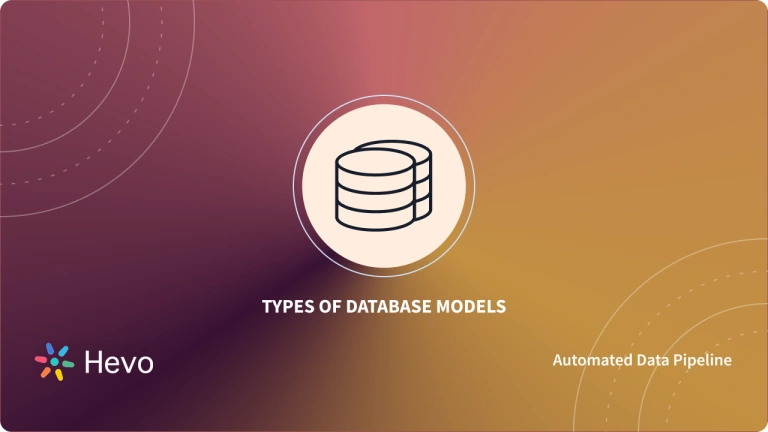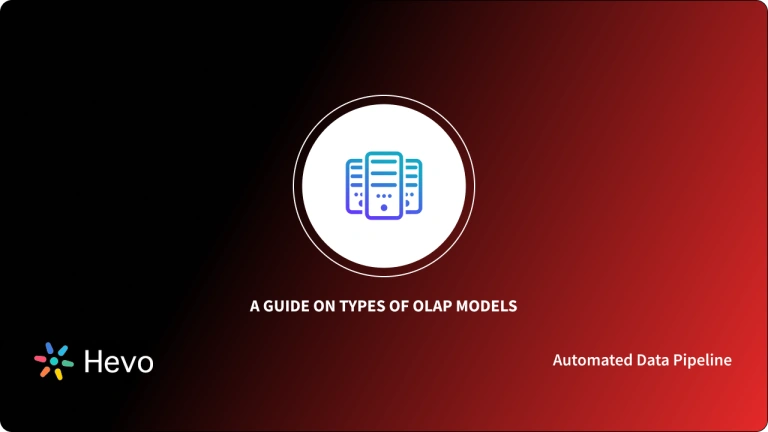Hierarchical Database Systems, as the name suggests, consist of databases where records are stored in a tree-like or parent-child structure. One parent node can have one or more child nodes. However, a child node can have only a single parent node. Thus, a Hierarchical Database System can have one-to-one and one-to-many relations, but not many-to-many relations. A record of employees linked to their respective reporting managers can constitute a hierarchy. A website sitemap is another example of a hierarchy. Similarly, the folder structure in your machine can also be represented hierarchically.
In this article, you will gain information about Hierarchical Database Systems. You will also gain a holistic understanding of the history and examples of Hierarchical Database Systems. It will also provide information about the advantages and disadvantages of Hierarchical Databases.
Table of Contents
What are Hierarchical Database Systems?
In a Hierarchical Database System, the data is stored as records (like in relational database systems). However, each record has a parent ID that lends it to the tree structure. The first record is known as the root record.
Consider the following example of a database containing 3 tables: Company, Departments, and Employees.
Company Table:
| ID | Company Name | Parent ID |
| 1 | ABC Ltd. | NA |
Departments Table:
| ID | Department Name | Department Description | Parent ID |
| 10 | R&D | Innovate new products | 1 |
| 11 | Finance | Manage Working Capital | 1 |
| 12 | HR | Define and maintain org. values | 1 |
| 13 | Sales and Marketing | Create the brand and sell the products | 1 |
Employees Table:
| ID | Employee Name | Age | Parent ID |
| 100 | Yash | 26 | 10 |
| 101 | Isha | 26 | 10 |
| 102 | Siddhi | 24 | 13 |
| 103 | Hemal | 24 | 11 |
| 104 | Ayush | 28 | 12 |
As you can see, each record in each table has a parent ID that links to a record in its parent table. The Company table has only one record and it is the root table. The Departments table has departments belonging to the company, and the employees table has employees belonging to each department. As you can see, each record (except the root node) has only one parent.
In practice, the parent-to-child relationship is implemented through pointers/indexes and parent and child records are stored close to each other on a storage device, minimizing the time to access records. Read about other types of database models and see which suits your use case.
Engineering teams must invest a lot of time and money to build and maintain an in-house Data Pipeline. Hevo Data ETL, on the other hand, meets all of your needs without needing or asking you to manage your own Data Pipeline. Here’s what Hevo Data offers to you:
- Diverse Connectors: Hevo’s fault-tolerant Data Pipeline offers you a secure option to unify data from 150+ Data Sources (including 60+ free sources) and store it in any other Data Warehouse of your choice. This way, you can focus more on your key business activities and let Hevo take full charge of the Data Transfer process.
- Schema Management: Hevo takes away the tedious task of schema management & automatically detects the schema of incoming data and maps it to the schema of your Data Warehouse or Database.
- Incremental Data Load: Hevo allows the transfer of data that has been modified in real-time. This ensures efficient utilization of bandwidth on both ends.
- Live Support: The Hevo team is available round the clock to extend exceptional support to its customers through chat, email, and support calls.
History of Hierarchical Database Systems
Hierarchical databases are well-suited to the tape storage systems used by mainframe computers in the 1970s. It was quite popular among organizations using this storage system back then. However, it lost popularity after the introduction of the relational model. The 1990s saw some resurgence of the hierarchical database model example through XML.
Examples of Hierarchical Database Systems
- IBM IMS: This is the most widely used hierarchical database in banking and telecommunication operations for the processing of transactions or management of data.
- Windows Registry: Microsoft Windows uses a hierarchical structure to store its configuration settings and options.
- XML Files: Data is represented in a tree-like format, which signifies the parent-child relationships. In most cases, they are intended for the storage and exchange of data.
- File Systems: Hierarchical file systems, such as NTFS or HFS+, organize files and directories in a tree structure.
- Healthcare System: Patient records are in a tree structure where the hospital forms the root, departments are nodes, and the patients are leaves.
- Organization Charts: Databases representing organizational charts, like company structures, wherein the employees report to their manager.
- Bill of Materials (BOM): In manufacturing, it is used to break down a product into components and sub-components in a hierarchical structure.
Advantages of Hierarchical Database Systems
- Simplicity is perhaps the greatest advantage of Hierarchical Databases. Since each record has only one parent, traversing through the database is very fast.
- There is referential integrity built into a hierarchical database. Thus, a record in a child table must be linked to a record in the parent table. Consequently, if a record is deleted in the parent table, corresponding child records also get deleted.
- Several programming languages provide support for dealing with tree-type data structures, making dealing with Hierarchical Databases example very simple.
Disadvantages of Hierarchical Database Systems
- The rigidity of this database is a big disadvantage. Since a child can have only one parent, often redundant records have to be introduced to properly explain some relationships.
- For example, in the above organizational structure, if Siddhi was also taking part in some work in the Finance department, a new entry for her would’ve had to be created, with the Finance department being the parent. Thus, there would be two Siddhis with different IDs in the database, although they represent the same person.
- Similarly, if a child has no parent assigned, then it becomes difficult to add the child record to this database. A temporary dummy parent record would have to be created.
- For example, consider a fresher joining the company and going through the training. His/her department would be allotted only after training. In such a case, it is difficult to add the record of that employee to the hierarchical database unless a dummy department like ‘Training’ is created.
- Reorganizing data within a hierarchical database can be very difficult because the parent-child relationships should not be disturbed.
- If someone wants to introduce a new relationship in the future, say ‘Category’ between ‘Departments’ and ‘Employees’, then reorganizing the entire database would be quite a task. Even if you do add the new relationship, all programs and applications accessing this database need to be modified to incorporate this new relationship.
- Another disadvantage is that the scope of such a database is quite limited. Not every piece of data is hierarchical, and you’d ultimately have to use other systems (like a relational data model) to represent your data.
- Also, there is no defined standard for hierarchical database systems, so the implementation differs for each system that you come across.
Conclusion
In this article, you learned about hierarchical database systems. This article also provided information on the history and examples of Hierarchical Database Systems. We also looked at the advantages and disadvantages of this database system. As a database analyst, you need to weigh your options before opting for a hierarchical database system and determine if it is indeed the best system to store your data. Hopefully, this article will help you with that.
Hevo Data, a No-code Data Pipeline, provides you with a consistent and reliable solution to manage data transfer between a variety of sources and a wide variety of Desired Destinations with a few clicks. Hevo Data, with its strong integration with 150+ Data Sources (including 40+ Free Sources) allows you to not only export data from your desired data sources & load it to the destination of your choice but also transform & enrich your data to make it analysis-ready.
Want to give Hevo a try? Sign Up for a 14-day free trial and experience the feature-rich Hevo suite firsthand. You may also have a look at the amazing price, which will assist you in selecting the best plan for your requirements.
Share your experience of understanding Hierarchical Database Systems in the comment section below! We would love to hear your thoughts.
FAQs
1. What is an example of hierarchical data?
Hierarchical data is organized in a tree-like structure. Examples include organizational charts, file directories, or XML data, where each element has a parent-child relationship.
2. Is SQL a hierarchical database?
No, SQL databases are primarily relational. However, SQL can handle hierarchical data using features like Recursive CTEs or Parent-Child tables.
3. Which database is best for hierarchical data?
Databases like Neo4j (graph database) or MongoDB (document database) are better suited for hierarchical data due to their flexible, tree-structured formats.




